Here is a simple lesson plan using a family tree diagram. This image features the basic family vocabulary: el abuelo, la abuela, el padre, la madre, el hermano, la hermana, el tío, la tía, el primo and la prima.
I created this image for the activity booklet of the Christmas song in Spanish Cascabel (Jingle Bells in Spanish), but you can use it with your own activities.
Below, I am also sharing more family-themed lesson plans and Spanish class activities to use in your novice and intermediate classes.
Basic Spanish Family Vocabulary Lesson Plan
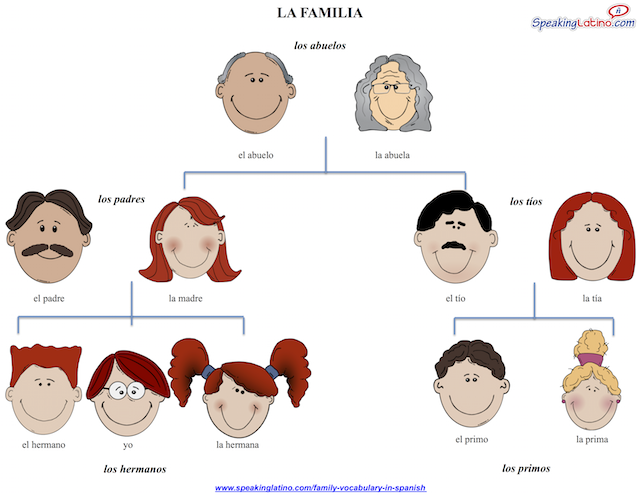
Lesson Title: Basic Spanish Family Vocabulary
Objective: Students will be able to understand and use basic Spanish vocabulary related to family members.
Materials: Whiteboard, markers, handout with family vocabulary
Introduction (5 minutes):
- Greet the students and ask them if they know any Spanish words related to family members. Write the words on the board.
- Explain that in today’s lesson, we will learn some basic Spanish family vocabulary.
Vocabulary Presentation (10 minutes):
- Write the following family vocabulary words on the board in Spanish and English:
Spanish – English
padre/papá – father
madre/mamá – mother
hijo – son
hija- daughter
hermano – brother
hermana – sister
abuelo – grandfather
abuela – grandmother
- Have the students repeat each word after you as you point to the vocabulary on the board.
- Ask the students to write each vocabulary word in their notes.
Practice (15 minutes):
- Divide the class into small groups and provide each group with the family tree worksheet and a handout of family vocabulary words in Spanish and English.
- Ask the groups to work together to match each Spanish word with its English equivalent and write them on the family tree worksheet.
- After 10 minutes, each group present their matches to the class.
Conclusion (5 minutes):
Recap the vocabulary words learned in today’s lesson.
Assessment: Observe the students’ participation during the vocabulary practice activities. Give a short quiz at the next class to assess their understanding of the vocabulary words.
More Family Vocabulary Spanish Lesson Plans and Activities
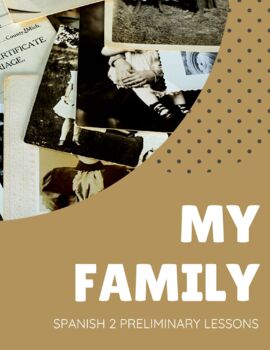 My Family, Physical Traits Mini Lesson Plan for Spanish 2
My Family, Physical Traits Mini Lesson Plan for Spanish 2
By the end of this review preliminary lesson, Spanish 2 students will be able to describe a family member and their physical traits, talk about their family, and understand basic descriptions with the help of pictures.
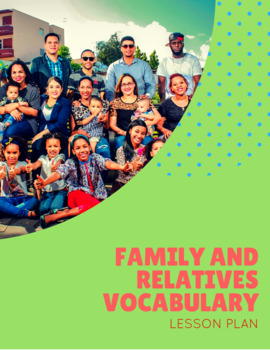 Family and Relatives Vocabulary – Physical Traits, Relationships, Age and Names Lesson Plan for Spanish 1
Family and Relatives Vocabulary – Physical Traits, Relationships, Age and Names Lesson Plan for Spanish 1
Using videos, students will learn vocabulary about family, adjectives to describe physical traits, how to ask and answer about name and age. Then, they will do an oral practice and, finally, they will create their own family tree to present in class.
 Christmas Song Cascabel – Family Vocabulary, Present and Preterite
Christmas Song Cascabel – Family Vocabulary, Present and Preterite
This activity pack includes:
- Basic Family Vocabulary Slide
- Basic Family Vocabulary Worksheet
- Cloze activity with word bank (present)
- Cloze activity with word bank (simple past prefect)
- Writing Activity
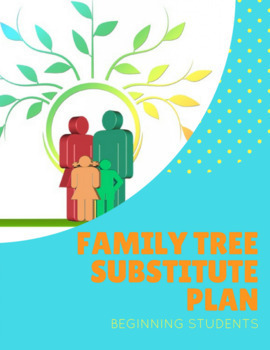 Family Tree Substitute Lesson Plan for Novice Students
Family Tree Substitute Lesson Plan for Novice Students
At the end of this activity, students will have reviewed Spanish family vocabulary while creating a visual representation of their own families.
Through the creation and illustration of an informal family tree, students will review family vocabulary and reinforce their understanding by labeling the Spanish vocabulary words with the names and illustrations of their own family members. By incorporating colors and drawings, students will be able to make connections between written language and visuals of their own creation.
 Tomar once: Familias y comunidades – Costumbres y valores (Chile) – Scaffolded Cultural Activity for Novice, Intermediate, and Advanced Students
Tomar once: Familias y comunidades – Costumbres y valores (Chile) – Scaffolded Cultural Activity for Novice, Intermediate, and Advanced Students
In this reading comprehension and visual activity, students learn about “Tomar once”, a tradition in Chile that consists of a special meal with family and friends.
This cultural scaffolded activity includes 3 versions so it can be completed by novice, intermediate low/mid, and intermediate-high/advanced students.
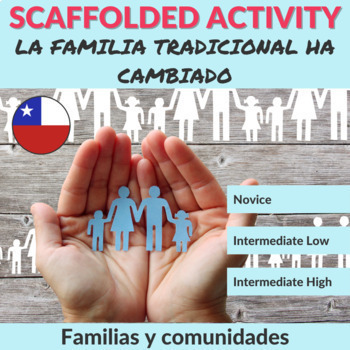 La familia tradicional ha cambiado: Familias y comunidades – La estructura familiar (Chile) – Scaffolded Cultural Activity for Novice, Intermediate, and Advanced Students
La familia tradicional ha cambiado: Familias y comunidades – La estructura familiar (Chile) – Scaffolded Cultural Activity for Novice, Intermediate, and Advanced Students
A cultural comparison activity about how the traditional family structure has changed. Differentiated for levels Novice, Intermediate Low/Mid, and Intermediate High/Advanced to explore world news.
In this reading comprehension activity, students read about modern families in Chile and how they have changed over the years.
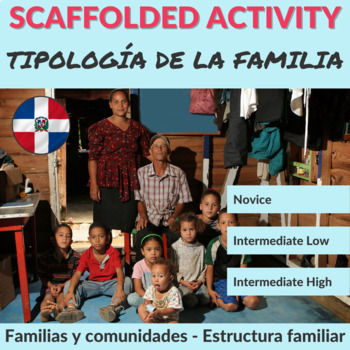 Tipología de la familia: Familias y comunidades – Estructura familiar (República Dominicana) – Scaffolded Cultural Activity for Novice, Intermediate, and Advanced Students
Tipología de la familia: Familias y comunidades – Estructura familiar (República Dominicana) – Scaffolded Cultural Activity for Novice, Intermediate, and Advanced Students
In this Reading Comprehension activity, students learn about families in the Dominican Republic, their traditions, and values.
This cultural scaffolded activity includes 3 versions so it can be completed by novice, intermediate low/mid, and intermediate-high/advanced students.
Check out our list of Spanish Class Activities.